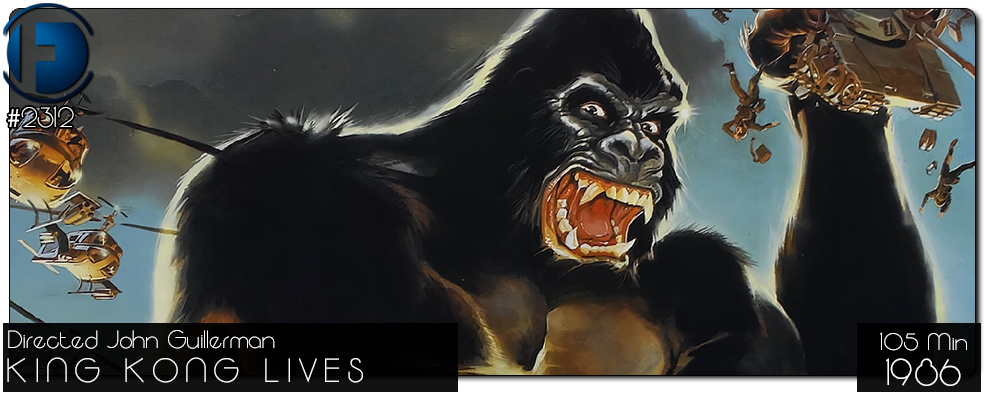Movie Review – King Kong Lives!
Principal Cast : Brian Kerwin, Linda Hamilton, Peter Elliot, John Ashton, George Yiasoumi, Benjamin Kechley, Frank Marden, Peter Michael Goetz, Jimmy Ray Weeks, Jimmy Wiggins, Mary Swafford.
Synopsis: Kong falls from the twin towers and he appears to be alive. However, his heart is failing, so it’s replaced with an artificial one. All is well until he senses that there’s a female Kong somewhere out there and escapes wreaking havoc.
********
Hopelessly boring, this 1986 snoozer resurrected the mighty Kong for American audiences and the promptly forced him to settle down with the Missus! King Kong Lives is set ten years after John Guillerman’s 1976 remake of King Kong, and sees more clumsy man-in-suit antics as a robot-hearted giant ape takes up boyfriend status when the film introduces an equally enormous female for him to flirt with. The expected fearmongering and public panic ensue, as well as asinine American military arrogance and inane bureaucracy, in this quest to keep audience’s eyes open and minds alert – it’s a tough ask, this film, mainly because the practical Kong effects look cut-rate and the script is an abomination of nonsensical plot and terrible characters.
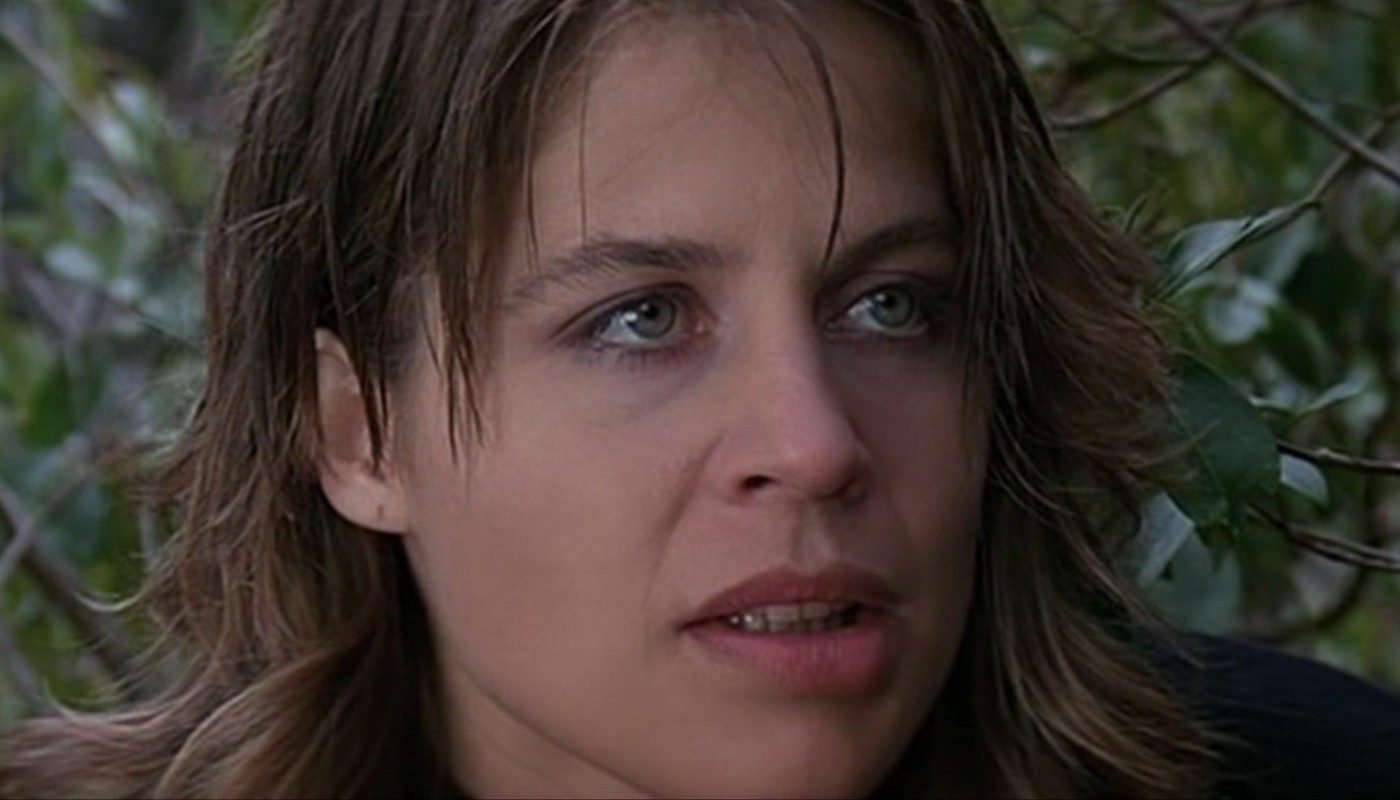
King Kong Lives picks up the story after the tragic events of the previous film. In this sequel, the mighty ape King Kong, who was presumed dead after his dramatic fall from the World Trade Center, is revealed to be alive but in a comatose state. He has been kept alive through the efforts of Dr. Amy Franklin (Linda Hamilton), a dedicated surgeon who has spent years working on a revolutionary artificial heart. The film opens with Dr. Franklin and her team preparing for a highly risky and unprecedented surgery to implant the artificial heart into Kong. However, Kong’s massive blood loss during the procedure creates a dire need for a compatible blood donor. To their astonishment, a second giant ape, a female named Lady Kong, is discovered in the wilds of Borneo. She is captured and brought to the United States to serve as a blood donor for the operation. Following a successful transplant, Kong awakens and quickly forms a bond with Lady Kong. However, their reunion is short-lived as the military, led by the ruthless Colonel Nevitt (John Ashton), views the giant apes as a threat and launches a campaign to capture or kill them. Kong, driven by his instinct to protect Lady Kong, escapes captivity, leading to a thrilling chase across the American landscape. Dr. Franklin teams up with Hank Mitchell (Brian Kerwin), an adventurer who initially captured Lady Kong, to help the apes evade the military and find a safe haven. The film weaves together intense action sequences with moments of tenderness between the two giant apes, highlighting their connection and the lengths Kong will go to protect his mate.
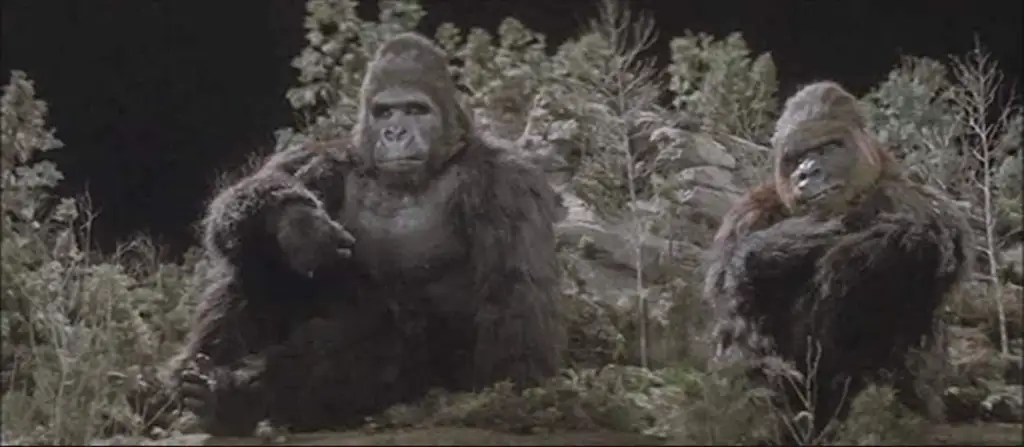
Whereas my review of director John Guillerman’s 1976 remake of King Kong was respectably glowing, with a few caveats, this far-too-long-in-the-making sequel forces a far more critical series of observations towards dated, uneven, unfunny, laborious monotony and for that, I ask for your patience. Viewing King Kong Lives through the prism of modern filmmaking, in a world where bombastic CG-heavy entries such as Godzilla Vs Kong exist, the film falters considerably. Of course, the visual effects here are badly dated even by mid-80’s technology and production value, which doesn’t help, but even taking into consideration the minimal budget afforded this by the De Laurentiis production company backing it, nothing can help (or does more to hinder things) than a risible screenplay and, frankly, idiotic central characters. Scripted by Ronald Shusett (the same guy who co-wrote Ridley Scott’s Alien and Paul Verhoeven’s Total Recall) and author Steven Pressfield (The Legend of Bagger Vance), the film transplants Kong from the concrete jungle of New York City to the dusty byways of backyard Eastern Seaboard USA, to research facilities and dry lakebeds as Kong hooks up with recently discovered female giant ape, Lady Kong (sure, nothing original here) and gets jiggy with it across the country. Removing Kong from the iconic New York City landscape and putting him in a relatively uninhabited middle-America might make for a more cost effective enterprise but it also makes for rather a boring watch; there’s less for Kong to destroy, far fewer elements of danger, and honestly he seems to get lost among the wide open vistas more than I expected. An unexpected side-effect of having less stuff to destroy means you really need to be on-point with other aspects of the film, in particular the human element. Sadly, that doesn’t occur here.
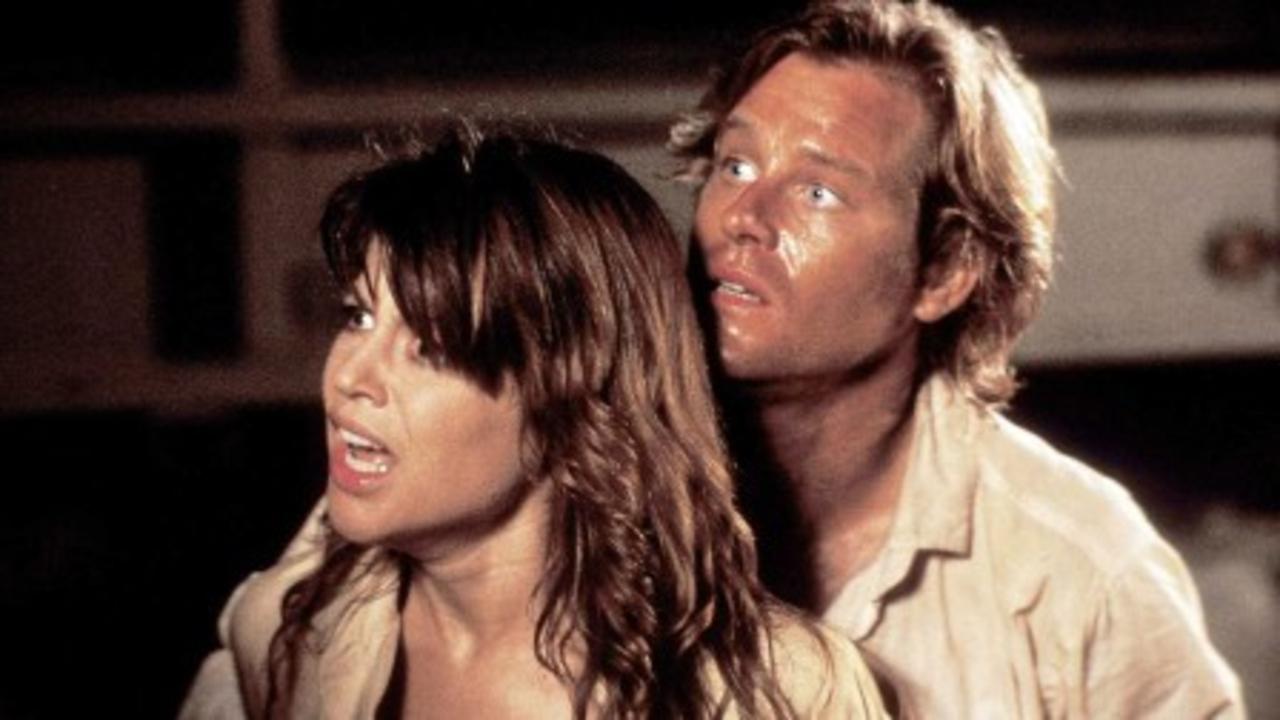
The film’s story is a preposterous nonsense involving giving Kong a mechanical heart to save him from his fall from the World Trade Center towards at the climax of the previous film, before requiring a blood transfusion, while the human doctors caring for the giant ape discover there’s a match in the giant female ape that could save him. Transcontinental hijinks ensue involving Linda Hamilton’s brave-faced monkey doctor character and her golden-coiffed love interest, monkey hunter suitor in Brian Kerwin, who themselves form a partnership much like Kong and Lady Kong do after they all escape the pursuing military. Kerwin and Hamilton play things a lot straighter than the script deserves, delivering astoundingly stupid lines of dialogue whilst continuing to stare off into the middle distance beyond the frame of the camera; Guillerman’s somewhat perverted sexual proclivities can’t quite manifest with Hamilton the way they did with Jessica Lange, and the actress is far too serious to really ham it up like many of her Kong-franchise forebears, so we’re left with an indifferently asexual, chemistry-free screen pairing who never really feel like genuine human characters. The bizarre scene in which Kong and Lady Kong snuggle up together for the night while Franklin and Mitchell get it on inside a sleeping bag a few meters away might have seemed romantic back in 1986 but today it feels… I don’t know, icky?
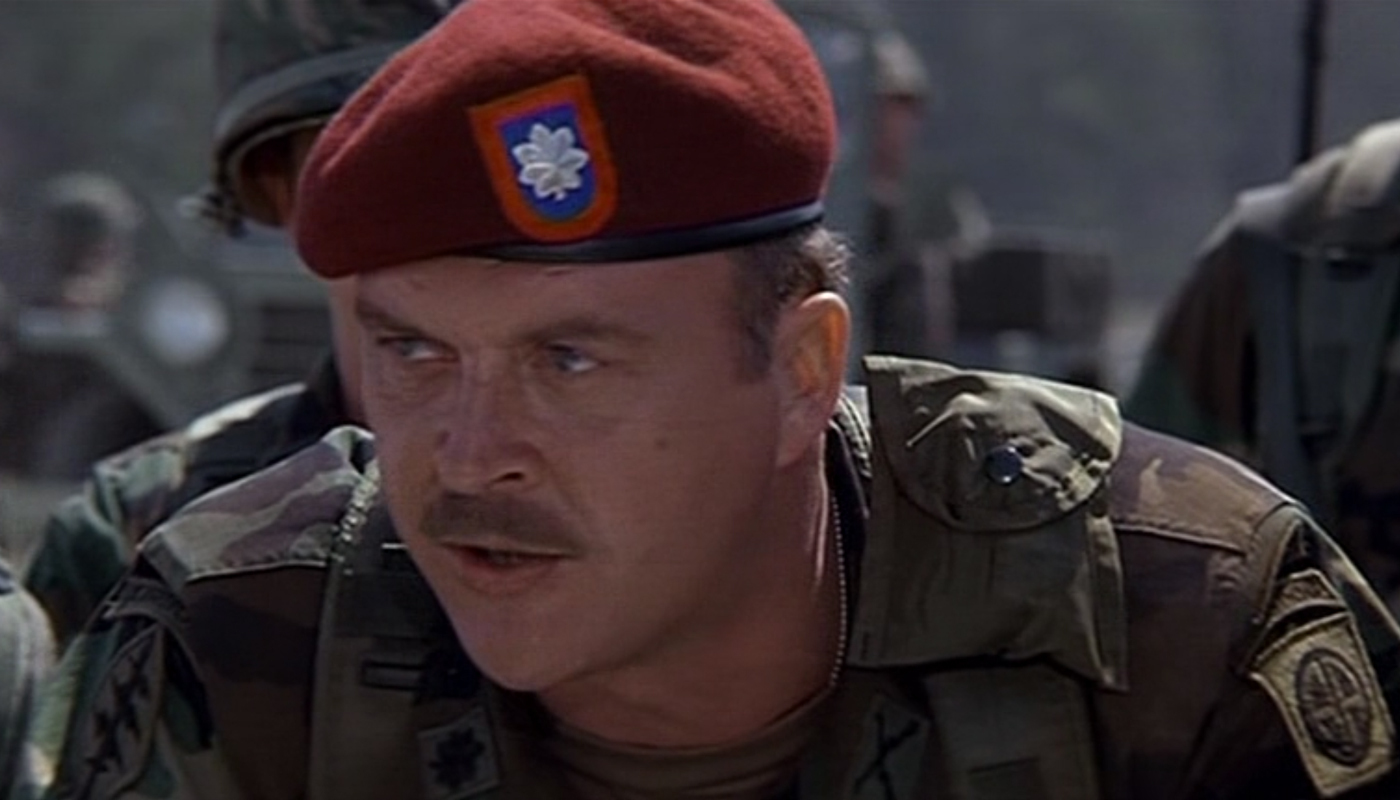
Throw together a litany of awful supporting characters, almost all of whom want Kong dead, and the roster of value to King Kong’s persecuted by humanity themes reduces considerably. In the Merian C Cooper original, and to a more bristly extent in the ’76 remake, Kong is objectified to the point of enragement, an unsubtle subtext around exploitation that, thanks to this poorly conceived screenplay, has been removed utterly here. No, in King Kong Lives the film’s subtext seems to be to blow up as much crap as possible, with the most asinine characters involved as the screen will hold, and Guillerman certainly delivers on that front, as anaemic as it all seems. The action sequences involving Kong, played by Peter Elliot in a rubber suit, involve a lot of foreground pointing and screaming cutting to a wide of Elliot standing on a miniature soundstage with models and undersized props to contend with – the visual trick wears thin, although to his credit Guillerman uses the rear-projection (or bluescreen) effect to combine Kong and regular sized actors together sparingly, as the low budget prevents a seamless visual connection for the viewer. There’s lots of fetishist military action from John Ashton’s awful Lt Colonel Archie Nevitt, who spends the film ranting, screaming and sweating through a villainous turn so dreadful it makes me long for the days of Maria Pitillo in Roland Emmerich’s Godzilla remake. A quartet of redneck ape hunters, who briefly capture Kong before meeting a predictably sticky end, provoke anger in the viewer through their animal cruelty, and in one of the film’s more successful moments we get to witness one of them pulled in half by the enormous simian. On the whole, however, the film feels flimsy and thin, held up by our love of Kong more than anything the story asks us to be emotionally involved in.
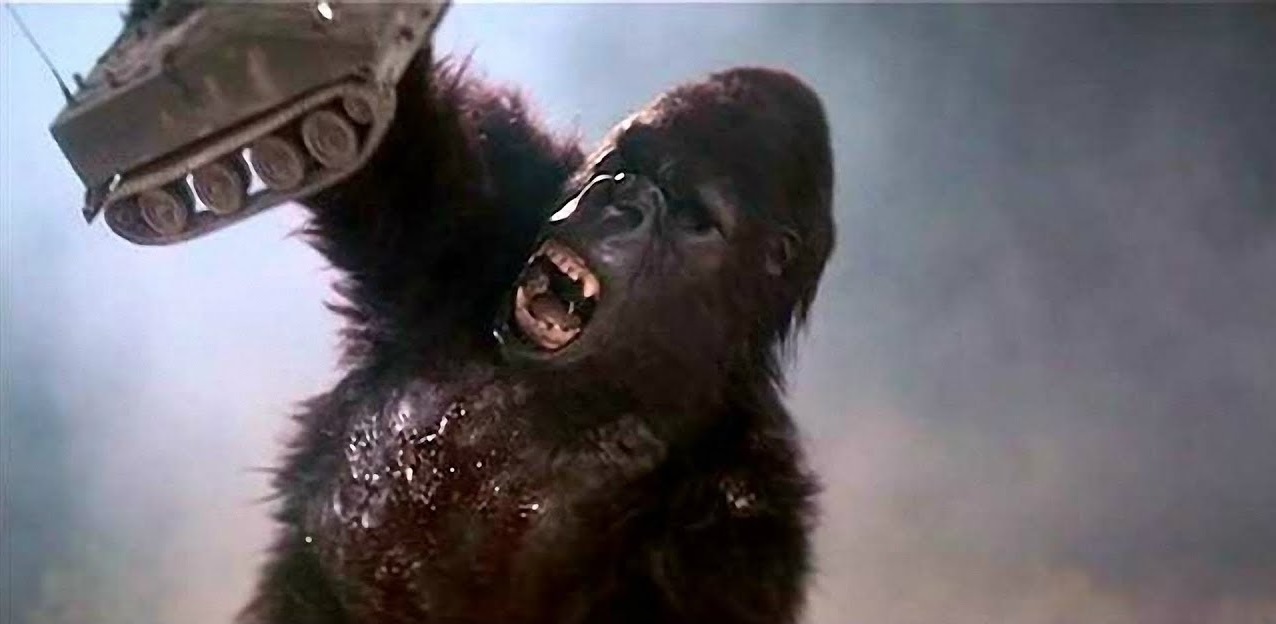
King Kong Lives isn’t a great film, and it’s certainly not one of the better films to feature the giant ape. It aims for pathos and emotional heft, sputters towards some kind of “taming the beast” at the very end, and delivers an obnoxiously strident tone throughout its ill-judged creative decisions. Guillerman’s direction of the ape-action is poor, the human actors are unable (or unwilling) to summon any enthusiasm for what they’re asked to do, and the visual effects – you know, the reason you’d go see a King Kong film! – range from poor, through to competent if not passable. The man-in-suit Kong performance doesn’t hold up at all, although some of the miniature sets the actor works on to achieve giant perspective are quite well mounted; if only the story was worth all this nonsense, but it isn’t. I bet after seeing this, Kong had wished he’s stayed dead on the streets of New York.

